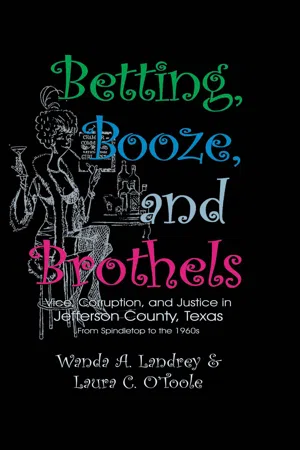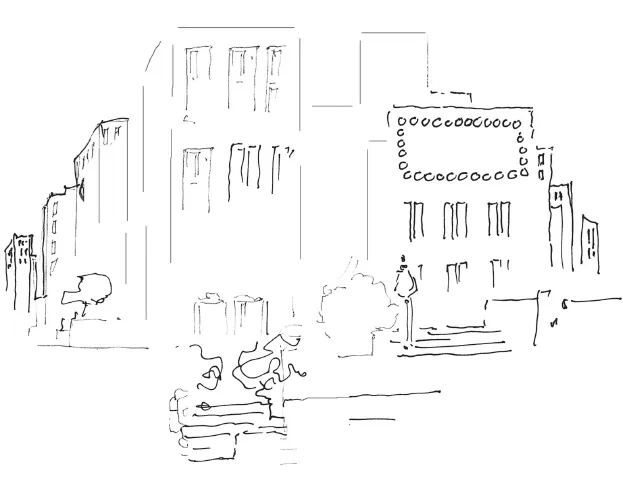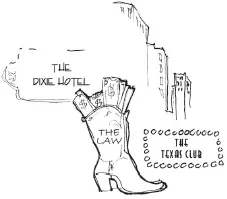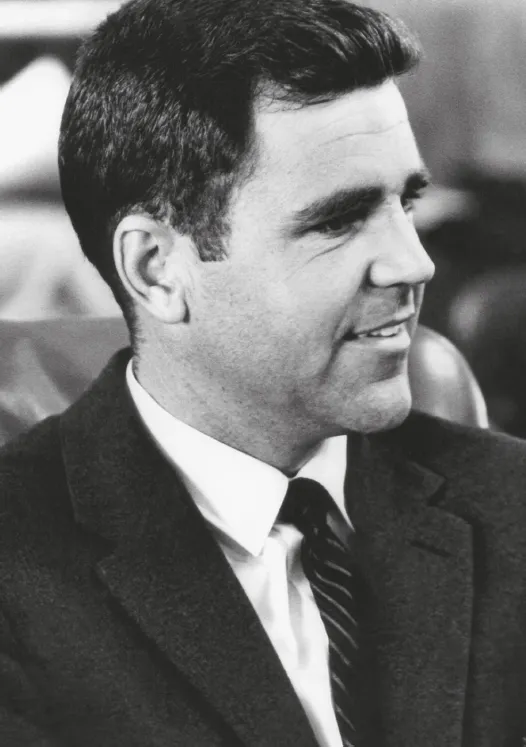
eBook - ePub
Betting Booze and Brothels
Vice, Corruption, and Justice in Jefferson County, Texas
- English
- ePUB (mobile friendly)
- Available on iOS & Android
eBook - ePub
Betting Booze and Brothels
Vice, Corruption, and Justice in Jefferson County, Texas
About this book
By the turn of the twentieth century, Beaumont, Texas, had acquired a reputation as a rough place. Situated in the oil-soaked chaos of Spindletop, Jefferson County was a hotbed of vice. For decades, gambling and prostitution thrived as elected officials either looked the other way or took money to keep quiet. That is, until 1960 when a swashbuckling young state legislator blew into town and spearheaded an intensive investigation into the rampant vice and governmental corruption that supported it. And, at a time when such things were virtually unheard of, he and his committee played it out on live television. When the dust finally cleared, the local governments of Jefferson County were turned inside out.
Frequently asked questions
Yes, you can cancel anytime from the Subscription tab in your account settings on the Perlego website. Your subscription will stay active until the end of your current billing period. Learn how to cancel your subscription.
No, books cannot be downloaded as external files, such as PDFs, for use outside of Perlego. However, you can download books within the Perlego app for offline reading on mobile or tablet. Learn more here.
Perlego offers two plans: Essential and Complete
- Essential is ideal for learners and professionals who enjoy exploring a wide range of subjects. Access the Essential Library with 800,000+ trusted titles and best-sellers across business, personal growth, and the humanities. Includes unlimited reading time and Standard Read Aloud voice.
- Complete: Perfect for advanced learners and researchers needing full, unrestricted access. Unlock 1.4M+ books across hundreds of subjects, including academic and specialized titles. The Complete Plan also includes advanced features like Premium Read Aloud and Research Assistant.
We are an online textbook subscription service, where you can get access to an entire online library for less than the price of a single book per month. With over 1 million books across 1000+ topics, we’ve got you covered! Learn more here.
Look out for the read-aloud symbol on your next book to see if you can listen to it. The read-aloud tool reads text aloud for you, highlighting the text as it is being read. You can pause it, speed it up and slow it down. Learn more here.
Yes! You can use the Perlego app on both iOS or Android devices to read anytime, anywhere — even offline. Perfect for commutes or when you’re on the go.
Please note we cannot support devices running on iOS 13 and Android 7 or earlier. Learn more about using the app.
Please note we cannot support devices running on iOS 13 and Android 7 or earlier. Learn more about using the app.
Yes, you can access Betting Booze and Brothels by Wanda A. Landrey,Laura C. O'Toole in PDF and/or ePUB format, as well as other popular books in History & North American History. We have over one million books available in our catalogue for you to explore.
Information
PART I
The State Takes Action

CHAPTER ONE

The Politics of Vice
Brothels! Bordellos! Red-light districts! From the beginning of time to the present, the public has acknowledged that these places exist and, subsequently, has accepted social behaviors by individuals within the confines of these locales. From the dens of inequity in old Babylon to the salons operated by sophisticated courtesans in nineteenth century France, and on to the tea houses of Japan where geisha hosted men in their “Floating World,” diverse public officials have condoned, and even designated, specific places for the practice of the world’s oldest profession.
By the beginning of the twentieth century, most of the larger cities in Texas, at one time or another, had a vice district encompassing several city blocks. Because such “districts” could keep the nuisance contained, most local governments and business leaders condoned prostitution in certain conditions, and efforts to mount reform movements were largely unsuccessful.
As the first World War wound down, and women’s church groups and temperance leagues gained more of a voice, crusades to eliminate prostitution and illegal gambling gained steam. Anti-prostitution groups waged a sustained and successful campaign resulting in the shut-down of vice operations in Dallas, Austin, and Amarillo.1
During the Depression years of the 1930s, the prostitution trade picked up again as crusades gave way to hunger. Once more, tolerance by law enforcement officers was the only practical response to the persistent industries of vice. Sheriff’s deputies and police blinked, or perhaps winked, and looked the other way. Yet the rise of venereal disease in the booming post-World War II years spurred cities to again attempt a crackdown. Although Dallas officials tolerated prostitution at a moderate level, Houston authorities successfully instituted a policy of repression during the 1950s and officials in Corpus Christi, Harlingen, Amarillo, and Lubbock followed suit.2
Vice zones in other cities survived the assault, however, as entrenched political groups, some policemen, many businessmen, and liquor and vice interests staunchly backed the districts. Periodic efforts to crack down on prostitution in Beaumont and Port Arthur were short-lived and often only for show. Local supporters contended that eliminating vice districts would only disperse prostitutes into other parts of town beyond the control of police.3
The situation was particularly entrenched in Galveston. “If God couldn’t stop prostitution, why should I?” asked the mayor of Galveston. By mid-century, leaders in Galveston’s vice industry had convinced the mayor, the police department and most of the citizenry that the city’s economy depended on maintaining a reputation for unimpeded gambling, drinking, and prostitution. Despite being in the “Bible Belt,” many thought gambling would one day be legalized in Texas, and that Galveston could become the Las Vegas of the south. In 1955, a leading anti-prostitution organization branded Galveston the “worst spot in the nation as far as prostitution is concerned.”4
By the late fifties, halting such political corruption and organized crime was all the rage and had become a springboard to political significance. Robert Kennedy had gained tremendous nationwide stature as chief counsel for the Senate Rackets Committee investigating corruption. As United States Attorney General, he mounted a fierce campaign to fight organized crime resulting in an 800 percent increase in convictions against organized crime figures.5
In Texas, a former Dallas County district attorney named Will Wilson resigned from the Supreme Court of Texas to run for Texas Attorney General. He pledged that if elected he would make every effort to stamp out vice in Galveston as well as every other county in Texas.6 Wilson ran a successful campaign, and he began to work immediately after he took the oath of office. He brought in the famous Texas Rangers to work undercover in conjunction with his office. Together they organized raids on popular Galveston gambling establishments. These resulted in injunctions to close 47 clubs, bingo halls and brothels for “openly and flagrantly violating the laws of Texas.” The Rangers smashed slot machines with ten-pound sledge hammers, burned them and dumped them into Galveston Bay.7 Historic gambling establishments located along the beach felt the waves hit the shore.
With pressure from Wilson, the Galveston County district attorney pressed countless felony charges, and the Rangers continued their relentless assault to rid the county of any shred of gambling paraphernalia. In the aftermath, Will Wilson rode his reputation as a crime fighter to political “super-stardom” in Texas. Even a notice posted on the padlocked door of a club on 24th Street made clear who was taking credit for this war. It read, “Closed. Will Wilson’s boys was here.”8
Tom James, a handsome, ambitious, and charismatic 30-year-old lawyer from Dallas looked on with interest. He campaigned for state representative, and voters elected him to the Texas Legislature in 1958. He fully supported Wilson’s “vice cleanup” project in Galveston and hoped to expand his campaign across the state. The legislature designated James as vice chairman of the 57th Texas House of Representatives General Investigating Committee charged with investigating vice conditions in Jefferson County. James jumped at the opportunity to make the cleanup of Jefferson County his claim to fame and the foundation for what he hoped to be a great political career in Texas. He soon would discover, however, that his path would not be as smooth as the road Wilson had followed.
The politically savvy Wilson, whose efforts in Galveston were met with wide praise, seemed to know just how far to push the envelope of legal reform without ruffling the wrong feathers. Wilson’s political operatives, feeling the waters in Jefferson County in anticipation of a possible run at the governor’s mansion, reported to the attorney general that local law enforcement officials in Beaumont were well aware of the presence of vice in their community. However, local officials told Wilson’s operatives that vice conditions in Beaumont, unlike Galveston, were “the quietest in history, small local operations of no consequence.” They described Beaumont’s gambling scene as “clean, honest, innocent, small stuff.” Based on these reports and cognizant of the community’s great affection for its powerful sheriff, Charley Meyer, Wilson kept his distance from Jefferson County.9
Other state politicians understood the potential Pandora’s Box looming in Jefferson County and the possible ramifications from exposing its long entrenched vice “containment strategy.” Many local political and business leaders undoubtably feared having their names connected to others whose activities may have been viewed with less tolerance in this new era of criminal reform. They strongly discouraged James from pursuing his mission with such fervor. Indicating that conditions in Jefferson County were much too entrenched to be changed, House Speaker Waggoner Carr told James, “You’re hurting me, and you’re hurting yourself.” Likewise, local State Senator Jep Fuller warned the young representative, “You’re not going to change any of this.”10
Undaunted by such warnings, James was apparently willing to risk his political life. He threw himself into ferreting out illicit gambling and prostitution in Jefferson County with the zeal of a Roman gladiator. So great was his mission that locals began to refer to the investigation as the “James Commission.” During the two months that followed, James and his fellow legislative committee members, Chairman Menton Murray of Harlingen, Lloyd G. Martin of Normangee, Charles Ballman of Borger, John Allen of Longview, and House General Counsel David Witts of Dallas came to realize just how complicated and explosive the situation had become.11

Former representative Tom James as he appeared in December 1960. James served as vice chairman of the Texas House of Representatives General Investigating Committee, which conducted the investigation of vice activities in Jefferson County in 1960-61.
—Courtesy the Austin History Center, Austin Public Library, AS 61-30262 1.
CHAPTER TWO

December 3, 1960
The Day It Rained On the Gamblers’ Parade
Three main roads connect the towns of Beaumont and Port Arthur, the two major cities of Jefferson County. Lined with industrial sites and oil refineries, none can be called scenic drives, but the unfamiliar traveler may view with interest the vast prison system that borders Highway 69 and numerous businesses along Twin City Highway. To the west of both highways is the road less traveled, known as the old Port Arthur Road. It leads past the Plum Nearly Ranch, an Arabian horse ranch owned by Jean and Gus McFaddin. Named after an employee who referred to its location as “plum nearly out of Beaumont and plum nearly to Port Arthur,” long-time residents well remember that it once was the location of the Pen Yan Club, the best little casino in Jefferson County. In the 1940s and ’50s, years before the McFaddins bought the property, L. L. (Jack) Thompson offered free drinks and delectable steaks to wagering patrons who checked through security. Thompson was no different from other vice operators in the county. All were under the protection of the top local enforcement officials and thumbed their noses at the laws of Texas.1
As though this symbolic gesture was a final salute, on December 3, 1960, the Department of Public Safety officers, the Texas Rangers, and members of the 57th Texas House of Representatives General Investigating Committee targeted the Pen Yan Club and carried out the first serious vice raid ever to be conducted in Jefferson County. Their dramatic actions on that day served as a blatant announcement to all illegal practitioners that the jig was up.2
The investigating committee had done its homework well, and the raiding party knew what to expect. Two months earlier the committee had met in Austin to discuss the Jefferson County situation. In November 1960, after receiving a detailed report of the existing vice conditions in Jefferson County from a group of concerned citizens, the committee took the investigation into the field. Although committee members initially relied on agents from the Department of Public Safety, they insisted on going undercover themselves.3
Counselor David Witts recalled that he dressed like he just came off a ship. When he knocked on the door of the Pen Yan Club, a man opened the peephole and said, “Hurry up and get in; those state investigators are in town.” Witts acquiesced and gave his address as being on a Mobil Oil tanker. Later he received a postcard forwarded to him from someone at Mobil signed “From all your friends at Betty’s Place.”4 The committee members found flourishing in Jefferson County “the oldest, largest, and best organized vice operation in Texas,”5 something starkly different from descriptions relayed to Will Wilson just a few years before. The officers rejoiced, for they had hit pay dirt, a second Lucas Gusher!
Witts remembered it was business as usual at the Pen Yan Club that Saturday morning, December 3, until several DPS men drifted in around 1 A.M. and casually halted a large dice game in progress. Others in t...
Table of contents
- Cover Page
- Title Page
- Dedication
- Copyright Page
- Contents
- Foreword
- Acknowledgments
- Preface
- Part I: The State Takes Action
- Part II: Hot Times in the Old Towns
- Part III: Concerned Citizens Speak Out
- Part IV: The Public Hearings
- Part V: The Cleanup Process
- Part VI: Turning Over the Courthouse Keys
- Part VII: “Doing What Comes Naturally”
- Part VIII: Bringing Closure
- Afterword: The Last Tour of the Dixie
- Notes
- Bibliography
- Index